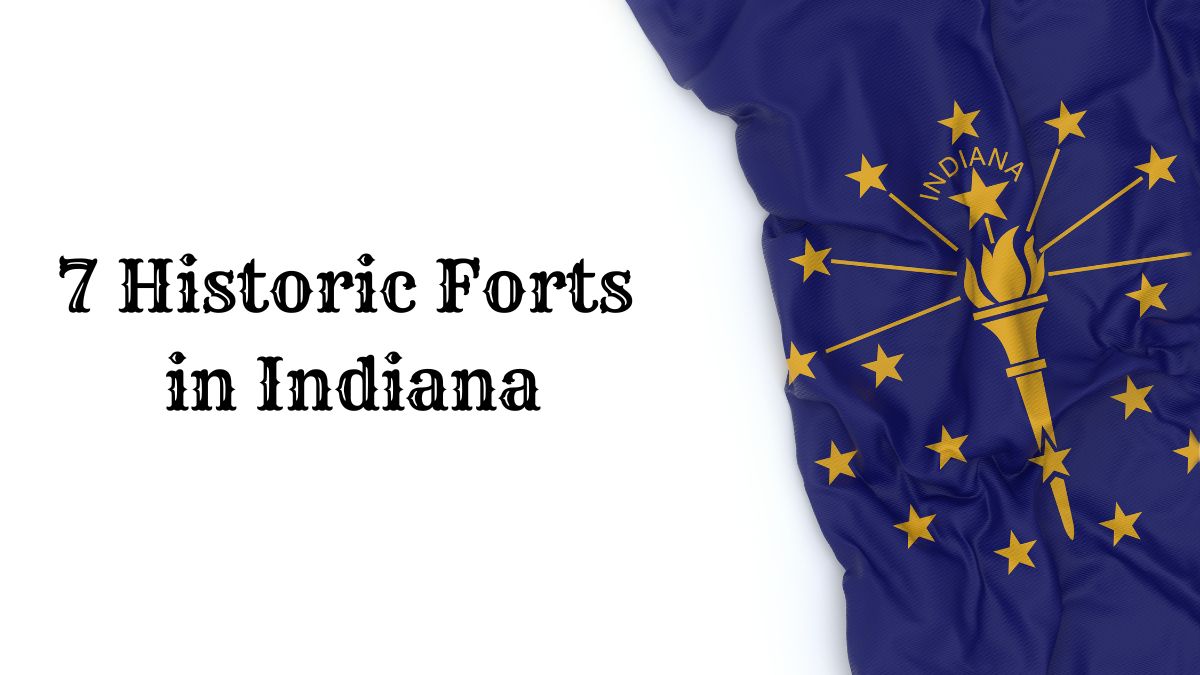In the heart of North America, Indiana has witnessed the confluence of cultures, ambitions, and strategic movements.
The state of Indiana, cradled by rivers like the Wabash, Maumee, and Ohio, has been the site of numerous historic forts that shaped American history.
These historic forts in Indiana, erected by various entities ranging from Native Americans to French settlers from French Canada and later American settlers, played pivotal roles in the larger narrative of the early 19th century.
7 Historic Forts in Indiana
| 1. Fort Ouiatenon | 6. Fort Knox I & II |
| 2. Fort Wayne | 7. Fort Patrick Henry |
| 3. Fort Vincennes (Fort Sackville) | |
| 4. Fort Harrison | |
| 5. Fort Miamis |
1. Fort Ouiatenon
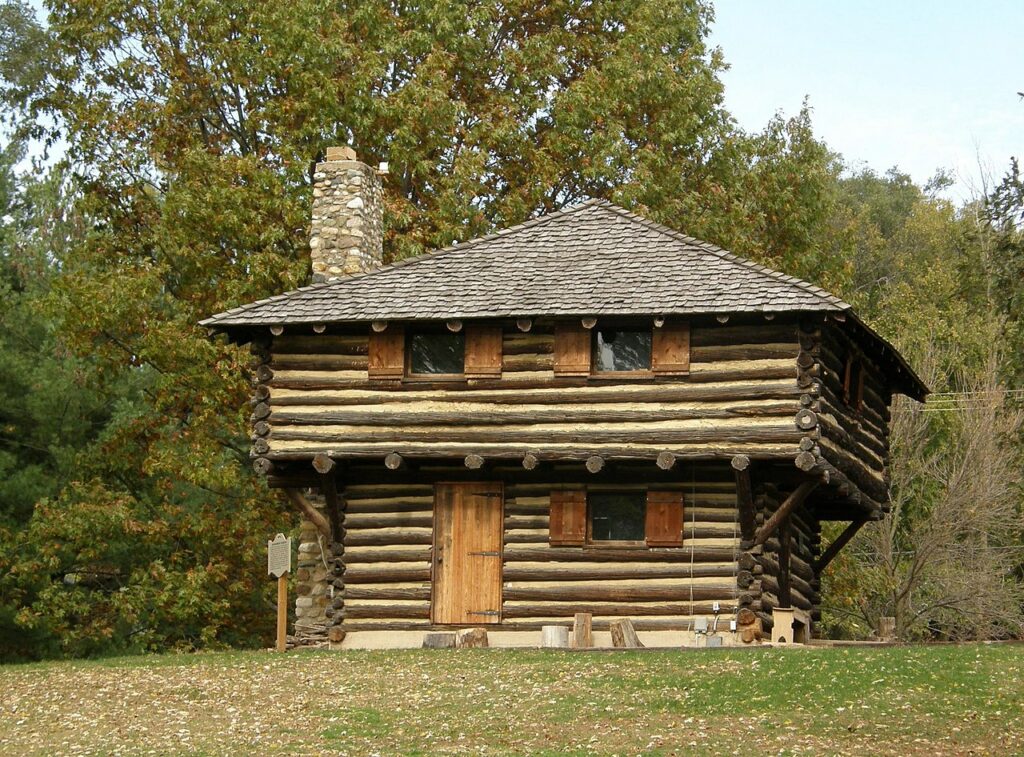
Located near the Wabash River in present-day West Lafayette, Fort Ouiatenon was founded in 1717. This fort emerged as a pivotal outpost in North America during its era, reflecting the ambitions of the French to mark their presence in the New World.
Fort Ouiatenon’s establishment heralded a significant interaction period between French settlers from French Canada and the native tribes, particularly the Wea tribe of the Miami Confederation.
The French, aiming to solidify their influence in the Mississippi River Valley against the encroaching British, forged robust fur trade ties with the natives, making Fort Ouiatenon a bustling trade center.
Shifts in Control
As the winds of the French and Indian War blew in the 1760s, the fort transitioned under British control. Despite this change in command, its strategic importance remained undiminished.
With the onset of the American Revolution, the fort’s role pivoted more towards trade than military defense. Later, during the Northwest Indian War of the late 18th century, it became a focal point for Native American forces opposing American westward expansion.
Preservation and Modern Significance
Today, the Tippecanoe County Historical Association diligently preserves the legacy of Fort Ouiatenon. Through their dedicated efforts, the fort stands as a National Historic Landmark and a symbol of Indiana’s rich early settler-native history.
The association organizes various initiatives, including the notable Feast of the Hunters’ Moon. This annual reenactment, set near the fort, vividly recreates the daily life of the fort’s inhabitants, attracting history enthusiasts from all corners.
2. Fort Wayne
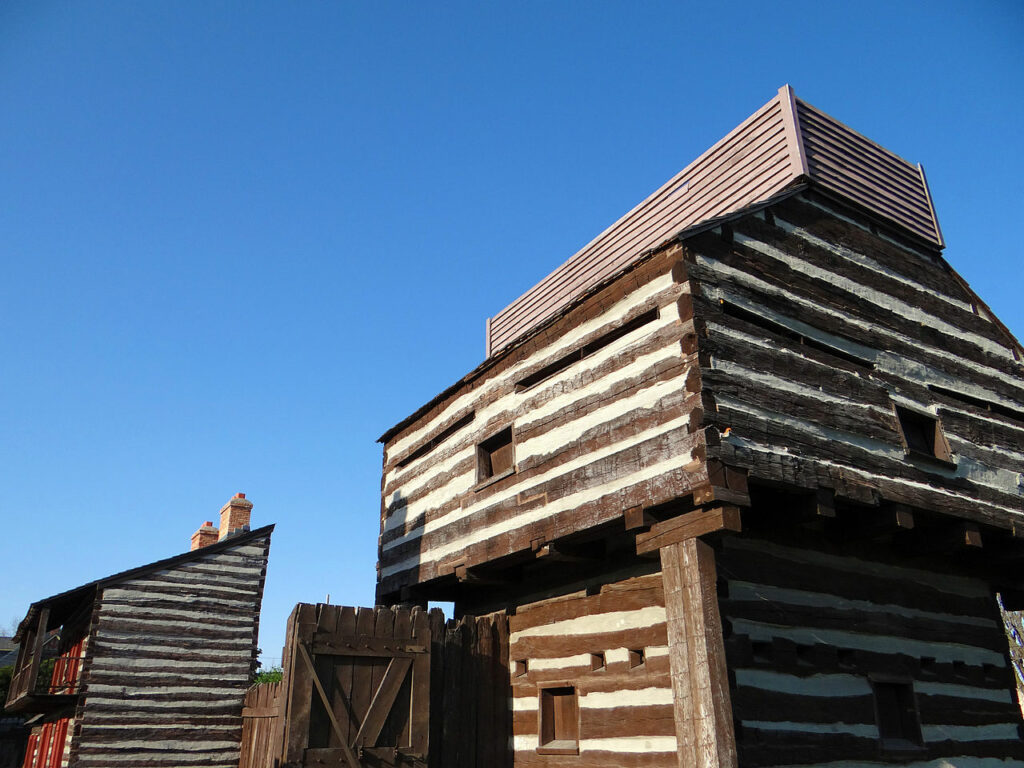
Historic Fort Wayne, named in honor of General Anthony Wayne, has a story deeply intertwined with the early narrative of the United States.
Founded at the confluence of the St. Joseph, St. Marys, and Maumee rivers, its location was no accident. This strategic placement allowed it to control access to a significant portion of the waterways system in the region.
Before the fort’s construction, the area was significant for native tribes.
The confluence served as the old Miami village of Kekionga, a crucial hub for various Native American tribes, primarily the Miami. This village became a point of contention as European settlers expanded their territories.
The Battle of Fallen Timbers
General Anthony Wayne‘s involvement with the fort began with the Northwest Indian War, a struggle between Native American tribes and the United States for control over the Northwest Territory.
After the decisive American victory at the Battle of Fallen Timbers in 1794, there was an immediate need to establish a robust American presence in the region. This led to the construction of Fort Wayne in 1794.
The Fort Through the Years
Over the years, Fort Wayne underwent multiple reconstructions. W
Although its primary purpose remained military defense and control of the surrounding area, it became integral to the early American settlers’ efforts to establish themselves amidst native tribes and British influences still lingering from the east.
Preservation and Legacy
The original site of Historic Fort Wayne, marked by Spy Run Avenue and the Van Buren Street Bridge, celebrates its illustrious past with a faithful replica.
This effort, championed by a non-profit organization, ensures that the story of Fort Wayne, its military significance, and its broader cultural implications remain accessible to future generations.
Today, the city of Fort Wayne has grown exponentially from its early days as a frontier fort. It is Indiana’s second-largest city and is an important cultural, economic, and educational hub.
Yet, its history, embodied by the defense and its surrounding landmarks, continues to shape its identity and serves as a poignant reminder of the city’s strategic role in the early chapters of American history.
3. Fort Vincennes (Fort Sackville)
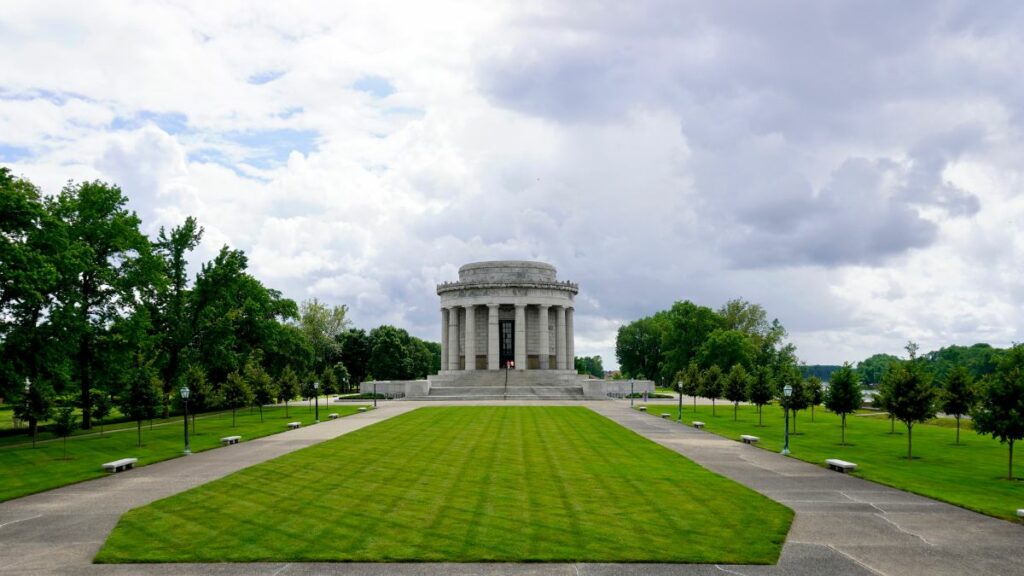
Situated alongside the flowing waters of the Wabash River, Fort Vincennes, often called Fort Sackville, has been a cornerstone of American history in the Indiana Territory.
Its location allowed it to serve as a nexus point for military operations and trade, given its accessibility via the river.
Initially erected by the French as Fort Vincennes in the early 18th century, it played a crucial role in maintaining French influence in the Mississippi River Valley, particularly during the height of the fur trade.
However, as global politics shifted and the British influence grew in North America following the French and Indian War, it came under British control and was renamed Fort Sackville.
The American Revolution and George Rogers Clark
One of the pivotal moments in the fort’s history unfolded during the American Revolution. In a daring winter expedition in 1779, Lieutenant Colonel George Rogers Clark led a band of American forces in a surprise attack against the British garrison.
Their audacious capture of Fort Sackville was a military victory and a monumental event that bolstered American claims to the western frontier, particularly in the old Northwest Territory. This victory significantly reshaped the region’s geopolitical landscape, setting the stage for the eventual establishment of the Indiana Territory.
Legacy and Modern Day
The triumph at Fort Vincennes has since been commemorated and celebrated. Today, the site has been meticulously preserved and stands as a testament to the bravery, strategy, and vision of figures like George Rogers Clark.
The location also serves as a poignant reminder of the shifting allegiances and boundaries that defined early American history.
Visitors to the fort can immerse themselves in its rich past, gaining insights into the struggles and triumphs that paved the way for the formation of the state of Indiana and the broader United States.
4. Fort Harrison
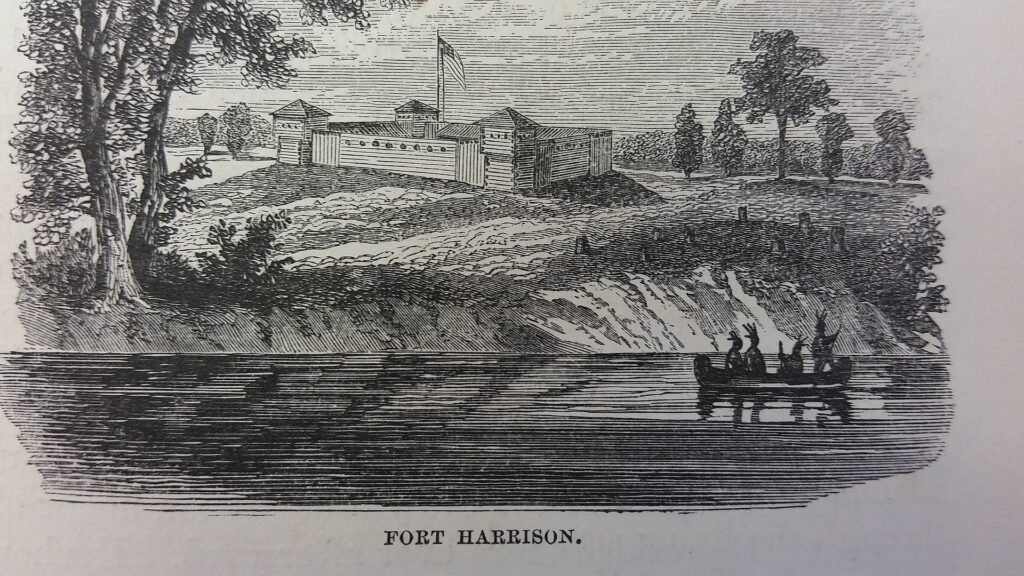
Situated close to Terre Haute, Fort Harrison is a monument to early American military strategy and the enduring legacy of key figures in American history.
Its prime location allowed it to oversee vast tracts of land and waterways, serving as a protective and operational base.
The fort’s association with William Henry Harrison, the ninth President of the United States, is profound.
He ordered its construction in 1811 to establish and solidify American presence in the region. Under his direction, the fort was pivotal in safeguarding American settlers and interests from potential threats.
A New Role in World War I
As times changed, so did the purpose and significance of Fort Harrison. With the onset of World War I, the fort found a renewed sense.
The U.S. government repurposed Fort Harrison to serve as a Prisoner of War (POW) camp. This transformation showcased the fort’s adaptability and the country’s commitment to leveraging existing infrastructure during times of crisis.
Fort Benjamin Harrison: A Complementary Presence
In proximity to Fort Harrison, Fort Benjamin Harrison emerged as a vital component of the U.S. military’s operations.
Established in the early 20th century and named in honor of the 23rd President, Benjamin Harrison, this fort facilitated various military endeavors, from training troops to administrative tasks, enhancing the combined military capabilities of the region.
Legacy and Contemporary Importance
Today, while the bustling activities and the clamor of troops may have subsided, Fort Harrison’s historical significance remains undiminished.
It is reminiscent of America’s evolving military strategy, the heroes who led the charge, and the fort’s multifaceted roles over the centuries.
Visitors to the site can journey through time, retracing the steps of soldiers and statesmen who once walked its grounds and reflecting upon the events that shaped the nation.
5. Fort Miamis
Overlooking the serene bends of the Maumee River in Allen County, Fort Miamis bears silent testimony to epochs gone by.
Established primarily as a British stronghold, its strategic positioning near the river allowed for defense trade and communication facilitation.
Fort Miamis was more than just a military installation. Its walls shadowed the old Miami Village of Kekionga, a critical hub for the native Miami tribe.
As such, the fort became an army vanguard and a sentinel overseeing the cultural and social interactions between the British settlers and the native inhabitants.
In the Throes of the Northwest Indian War
The late 18th century saw the Northwest Territory become a hotbed of conflict and ambition. Amidst the tumult of the Northwest Indian War, Fort Miamis played a decisive role.
The British, aiming to counteract the burgeoning American influence in the region, fortified the post, making it a nexus of military strategy and planning. Within its walls, strategies were devised, alliances were formed, and crucial decisions impacting the region’s future were taken.
Tales of Transition
Over time, the fort witnessed numerous transitions, from shifts in control between powers to the region’s changing dynamics.
Each brick and bastion of Fort Miamis now narrates tales of conflicts, alliances, betrayals, and the ever-evolving tapestry of history.
Preservation and Modern Reflection
Though the bustling activities of yore have ceased, the remnants of Fort Miamis remain a cherished historical site.
Today, visitors to this storied location can immerse themselves in its rich past, reflecting upon the complex interplay of cultures, ambitions, and geopolitics that once converged at this pivotal fort in Allen County.
Related: 10 Historic Forts in Nevada
6. Fort Knox I & II
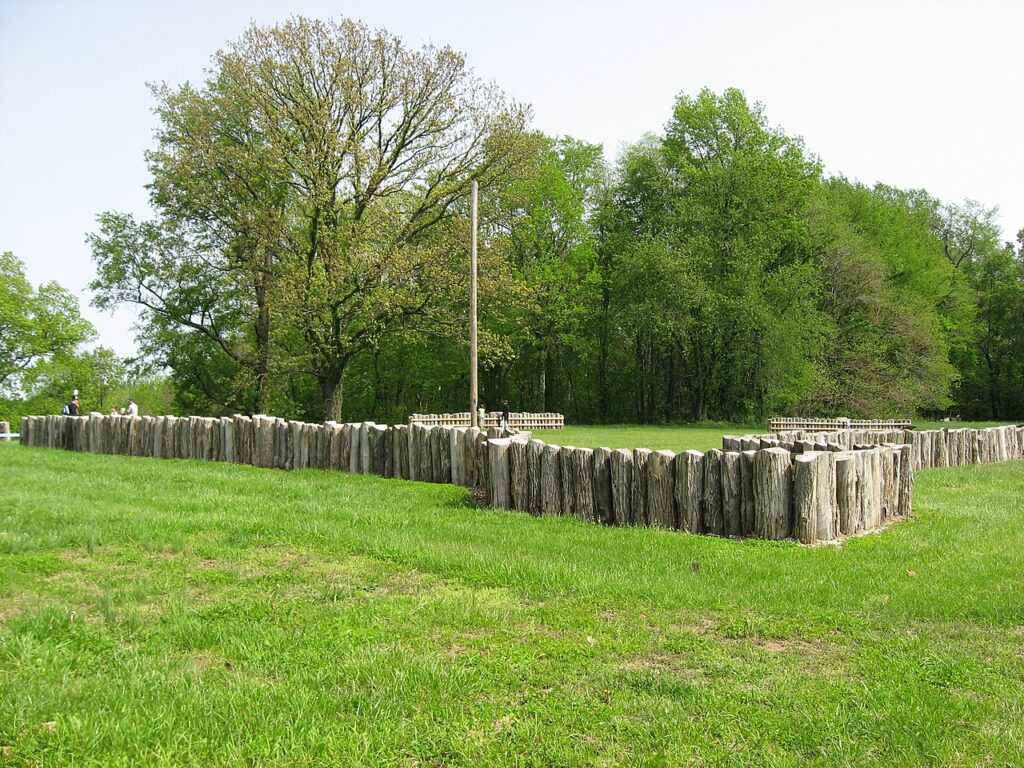
Two sequential fortifications bearing Fort Knox stood in the rolling landscapes near Vincennes, Indiana.
Though distinct in their timelines and structures, both played crucial roles in the evolving tapestry of the American frontier.
As defensive strongholds and bustling trading posts, they held the pulse of the region’s socio-political and economic dynamics.
Fort Knox I: The Initial Bastion
The first of these twin fortifications, Fort Knox I, emerged as an answer to the pressing need for defense in the growing territories of America.
Its walls bore witness to the first interactions between settlers, native tribes, and traders, ensuring stability in the often tumultuous frontier life.
As a trading post, it became a conduit for goods, ideas, and cultural exchanges, laying the groundwork for the broader development of Vincennes and its surrounding regions.
Fort Knox II: Rising from the Ashes
After the eventual decline of Fort Knox I, there was a realization that the strategic importance of the area was undiminished. Hence, Fort Knox II was conceived and erected.
While it inherited the defensive mantle of its predecessor, it also incorporated lessons learned from earlier conflicts and interactions.
Enhanced fortifications, better trading facilities, and a more inclusive approach towards the diverse communities made Fort Knox II, not just a military post but a beacon of growth and cooperation.
Enduring Legacy
Though neither fort stands in its full glory today, its legacies are deeply entrenched in the history of Vincennes and Indiana.
They remind us of early American settlers’ challenges, the region’s strategic importance, and the intricate dance of trade, defense, and diplomacy on the frontier.
Today, historians and enthusiasts flock to the sites, retracing the paths once treaded by soldiers, traders, and native peoples and immersing themselves in the rich tapestry of stories and events that shaped the land’s destiny.
7. Fort Patrick Henry
Fort Patrick Henry was established in 1775, overseeing vital waterways crucial in the evolving American landscape. Named after the prominent patriot, Patrick Henry, the fort became synonymous with the fervor and resilience of early American endeavors.
Fort Patrick Henry wasn’t merely a protective barrier throughout its operational tenure. It actively safeguarded settlers from potential threats while serving as a hub for traders, pioneers, and diplomats.
This dual role ensured its place as a vital component in America’s westward thrust.
Crossroads of Peace and Conflict
Its strategic position meant Fort Patrick Henry was often at the center of pivotal events. Diplomatic negotiations and budding trade relationships unfolded within its walls.
Yet, the fort also prepared for and faced external hostilities, mirroring the unpredictability of life on the frontier. Here, treaties found life, and alliances took shape, but the sounds of warfare occasionally pierced the air.
Modern Significance and Legacy
The era of frontier confrontations and negotiations by candlelight might be history, but Fort Patrick Henry’s relevance in American history remains significant.
Today, visitors flock to its historic precincts, retracing the steps of early American soldiers, settlers, and diplomats.
With its storied past, this fort bridges the gap between historical events and contemporary understanding, offering insights into the challenges and victories that shaped the nation.

Cory is a website owner and content creator who enjoys fishing, history, coin collecting, and sports, among other hobbies. He is a husband and father of four.
Romans 15:4 For whatever was written in former days was written for our instruction, that through endurance and through the encouragement of the Scriptures we might have hope.

